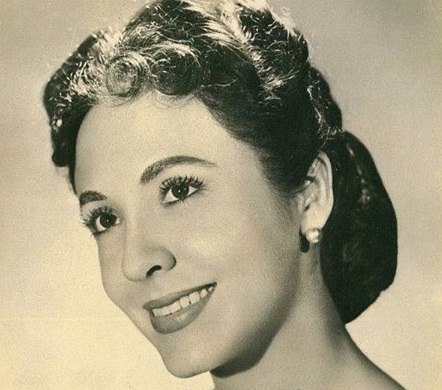Time not only has the peculiarity of being the only category that is unchangeable, but it also keeps some events as part of the collective memory while concealing others.
The resounding career of Georgina Luisa Cabrera Parada (Havana, May 28, 1928) in the Cuban theater, radio and television of the 20th century somehow makes us forget her footprints in the big screen. This is not something casual.
Until October 24, 1950, when the first Cuban television channel was broadcast, filmmaking had been in the center of the attention. The rapid growth of the Cuban television completely changed that panorama, due to certain peculiarities.
Almost exceptionally as compared to the founders of the Ibero-American video, the Cuban television began broadcasting a regular programming for more than eight hours daily ever since Channel 4 (Union Radio TV) was inaugurated. Two months later, Channel 6 (CMQ TV) maintained a similar intensive programming.
The extraordinary boom of publicity and applied research in Cuba turned the television into the ideal framework for applying communication strategies and carrying out market studies of enormous proportions to enhance advertising campaigns and adjust TV formats and styles.
In less than eight years, five new TV channels would be broadcasting in Havana, not to mention the affiliates in other provinces, though some of them did not last long.
The large number of motion images, first from North America and later on made in our country, allowed for a peculiar audiovisual culture that became part of Cubans’ daily life.
Because we did not have a solid film industry, the cultural industry in Cuba before 1950 was pretty much related to the radio and publicity. The arrival of the video provided a major boost to the digital media world and replaced the film industry.
The best actors, scriptwriters and musicians began alternating on the radio, the theater, publicity works and the cinema.
This explains why the Cuban artist, known as Gina Cabrera, became widely known in Channel 6. Her intense career on the radio, the theater and the television in the 1940s and 50s did not prevent her from alternating her work on the big screen.
In 1946, Gina made her debut in the Cuban film Sed de amor with Rafael Bertrand, a Cuban who had became popular in Mexico. Produced by Charles Ginart, that film was premiered in February, 1947, at Havana’s Campoamor Movie-theater.
In August 1950, there were rumors going around that Gina and Alberto González Rubio would also perform the successful couple they were playing on the radio in a film version of that play, written by the famous storyteller and scriptwriter Dora Alonso.
In 1951, rumors had it that Manuel and Rodolfo Pellón and Manuel de la Pedrosa would be the producers of Príncipe de contrabando (1) and La Renegada (2), version of a radio play by Arturo Liendo.
In 1954, Gina starred in Cita en La Habana, where she sang together with Fernando Fernández a song that would later be performed in the TV musical program Casino de la alegría.
Between June and July of that year, she traveled to Mexico together with Alberto González Rubio to shoot Frente al pecado de ayer, another radio play taken to the movie.
This is a part only of the history kept in our archives.
NOTES:
(1) Together with Néstor de Barbosa, Leopoldo Fernández and Aníbal de Mar―Pototo and Filomeno―, Mimi Cal, Pedro Segarra, Dulce Velasco, José Barlia, Rafael Correa, Luciano de Pazos, lthe dance couple Ana Gloria and Tony, and Cosmopolita Orchestra.
(2) Together with Rita Montaner, Yadira Jiménez, Alberto González Rubio, Enrique Santiesteban, José de San Antón and José Sanabria. Adaptation and direction: Ramón Peón. Music: Ñico Saquito and Maño López.
Translation: Dayamí Interián (Cubarte)


Deje un comentario